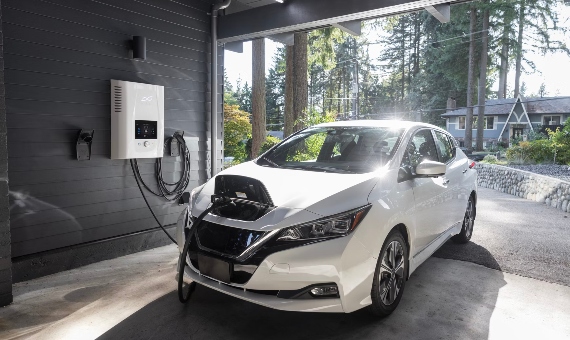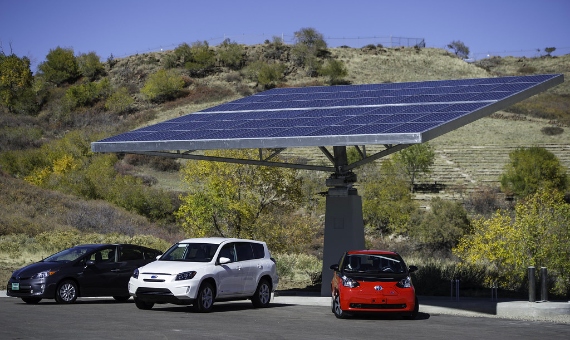The electric car, or alternatively the hybrid, has become the most popular symbol of individual action against climate change. While it is worth bearing in mind that some experts see the emphasis on personal responsibility as a distraction promoted by large corporations—just over 100 companies account for 70% of all greenhouse gas (GHG) emissions—and that both the carbon footprint concept and its first calculator were the work of an advertising campaign by oil giant BP, the fact is that millions of people around the world have embraced the idea of electric or hybrid mobility, concerned by the oft-repeated fact that transport accounts for around a quarter of global GHG emissions. However, even such a necessary transition away from fossil fuels is a double-edged sword that deserves critical analysis.

Transportation, in all its forms, is responsible for 21% of global CO2 emissions, or 23-24% of all energy-related GHG emissions. Road transport accounts for 72% of this total, while aviation is just over 10%, slightly more than shipping. Of all transport emissions, passenger cars account for 41-45%, followed by heavy and medium-sized trucks at 22-29%. Although the COVID-19 pandemic reduced emissions from cars in 2020, this was only a temporary lull against a backdrop of steadily increasing emissions from this source over the past decades. The US is by far the world’s largest generator of emissions from transport.
A change in the way we travel
Another way of looking at transport emissions is to place them within the context of household emissions. As we have been explaining in this series of articles, GHG emissions generated directly by households amount to 20% of the total in a country like the USA, which rises to more than 60% if indirect emissions caused by the consumption of products and services and the use of electricity are included. From this perspective, transport accounts for the largest share of direct emissions attributed to households, 73%, or 30% if indirect emissions are also included. This percentage exceeds the share of emissions from energy consumed at home—25%—but not all of this is due to private vehicle use: this accounts for 23%, while the remaining 7% is due to public transport and other services.
It is immediately clear from all this data that the private car is responsible for a large share of climate change emissions. In fact, it is four times more than that of air travel, even though flying has recently become the focus of campaigns such as the Flygskam or Flight Shame movement. Indeed, while air travel does have a considerable impact on our personal carbon footprint, aviation only slightly exceeds shipping in terms of emissions; and given that 80% of international trade in goods moves by sea, there are obvious implications for our consumption habits. As for car use, private vehicle emissions are rising steadily, both in absolute terms and per capita: the car fleet is growing, people are travelling more, the number of cars per household is increasing and the number of occupants per car is falling. At the current rate, transport emissions are projected to double by 2050.

Faced with this problem, what is the solution? Electric vehicles appear to be a greener option than combustion vehicles, but are they a panacea? The electric vehicle fleet has grown significantly in the last decade, totalling 16 million units by the end of 2021, according to the International Energy Agency. However, they still account for only 9% of global sales, concentrated mainly in China, Europe and North America. Is this shift sufficient to cut fossil fuel emissions, so as to put the transport sector on the necessary path towards the decarbonisation of society?
Just how sustainable is the electric car?
At Lund University in Sweden, climate change sustainability experts Seth Wynes and Kimberly Nicholas compiled previous studies published to date to calculate the impact of various individual actions on mitigating the climate emergency. In particular, they wanted to know to what extent the measures recommended to students in high school textbooks in a country like Canada are actually the most effective in cutting GHG emissions.
What Wynes and Nicholas found was that the measures identified as having the greatest impact by the studies only account for 4% of those recommended to teenagers, and that in Canada, the US, the EU and Australia, the recommendations focus on actions with lower emission reduction potential. As far as car use is concerned, the data collected by the researchers reveal a surprise: switching from a conventional car to a more efficient one can achieve an emissions reduction of 1.19 tonnes of CO2 equivalent (tCO2e) per year, while an electric car still emits an average of 1.15 tCO2e. The measure that far exceeds these, the second most effective of all those identified by the authors, with a reduction of 2.4 tCO2e per year, is to do without a car altogether.
The truth is that electric vehicles are by no means free of environmental impacts either. The extraction of raw materials, their manufacture and transport, the energy needed to run them and the management of waste at the end of their useful life—including batteries, which contain metals such as lithium, cobalt, lead, nickel and copper—all leave a considerable footprint in the form of pollution and emissions. The key question, then, is whether the full life cycle is less harmful to the environment compared to conventional cars.

In the first step, the extraction of raw materials and manufacturing, there seems to be no discrepancy in the studies: manufacturing an electric or hybrid car has a higher environmental cost than a conventional one. This footprint is mainly due to the mining of the necessary metals and rare earths for lithium-ion batteries, which consumes a lot of energy and water and releases toxic compounds. In addition, the weight of the batteries forces engineers to introduce other, lighter materials into the car, which are also energy-intensive. This environmental cost also affects the last step: disposal and recycling. According to the European Parliament, “the production and disposal of an electric car is less environmentally friendly than a car with an internal combustion engine.”
Specifically, a study in China estimated that manufacturing a conventional car generates 10.5 tonnes of CO2, while an electric car produces 13 tonnes. Of this, 3.2 tonnes are produced in the manufacture of the battery. In terms of recycling, a fossil-fuelled vehicle produces 1.8 tonnes of CO2, and an electric car produces 2.4 tonnes, of which 0.7 tonnes comes from recycling the batteries.
Boosting the electric car with green energies
So the problem shifts to the use of the car: is the footprint of the manufacture and recycling of an electric vehicle offset over its lifetime? But there is no simple answer, as it depends on whether or not the electricity needed to recharge the batteries comes from clean, renewable sources. Some experts claim that an electric vehicle can generate more emissions than a combustion vehicle. In a controversial and criticised article in The Guardian, Munich University economist Hans-Werner Sinn claimed that electric vehicles simply move emissions from the tailpipe to the power plant. And while Sinn’s estimates have been widely disputed, the fact remains that more than 80% of global electricity still comes from fossil fuels.
So the situation differs from country to country. In the UK, one report estimated that it takes two to six years of use for an electric car to offset its manufacturing emissions. In the EU and according to the European Parliament, “taking into account the average energy mix in Europe, electric cars are already proving to be cleaner than vehicles running of petrol.” The Chinese study cited above calculated that at 150,000 kilometres the combustion vehicle still accumulates fewer emissions, but that over the total life cycle the electric car emits 18% less. In a country like New Zealand, where more than 80% of energy comes from renewables, the reduction in emissions of the electric car compared to the conventional car is 62%.

Some experts give another reason to support the electric car: the transition will be complex (see box), but it’s a bet on the future: “The car we choose to buy today directly influences the future of our energy system,” wrote Ran Boydell, a sustainable development expert at Heriot-Watt University in Edinburgh, in The Conversation. “Choose a combustion-powered vehicle and we lock in ongoing fossil fuel use. Choose an electric vehicle and we support the switch to a zero-carbon society.”
Amid the electric car debate, what are the alternatives? Hydrogen-powered vehicles are another option under development, but this technology also has its drawbacks, and there are doubts about its viability. On the other hand, another proposal is gaining momentum, already suggested by the Wynes and Nicholas data: living without a car. According to the two researchers, the problem lies in the model: “The car-based transport model itself still allows for low-density rural housing developments, which are associated with twice the emissions per capita of high-density housing as well as greater consumption and energy use.” Other studies and experts agree that the solution lies in denser population centres that facilitate walking, cycling and public transport and reduce the number of vehicles. But is society ready for a much more radical transformation than just swapping gasoline for batteries?
Is it possible to decarbonise the electric car?
In an ideal future, where all electricity will come from clean, renewable energy, the objections to the electric car will disappear, as this option will prove to be a clear advantage in the lifecycle of the vehicle. But this is not the case today; in the current situation and in the transition to this decarbonised future, the electric vehicle may impose additional problems.
With much of the energy still coming from fossil fuels, increased demand for electric vehicles may force more natural gas to be burned to produce electricity, increasing emissions. For consumers, and with escalating energy prices in many countries, recharging the car becomes a burden. With traffic and parking priorities favouring electric cars, traffic congestion for conventional vehicles and their time of use may increase, which means more fuel consumption and emissions. Some experts point out that this transition may increase emissions above the carbon budget set to reach the Paris agreement targets—limiting warming to 1.5°C. In short, the electric car will only be a solution if it is accompanied by a huge energy transformation, which is already long overdue.
Comments on this publication